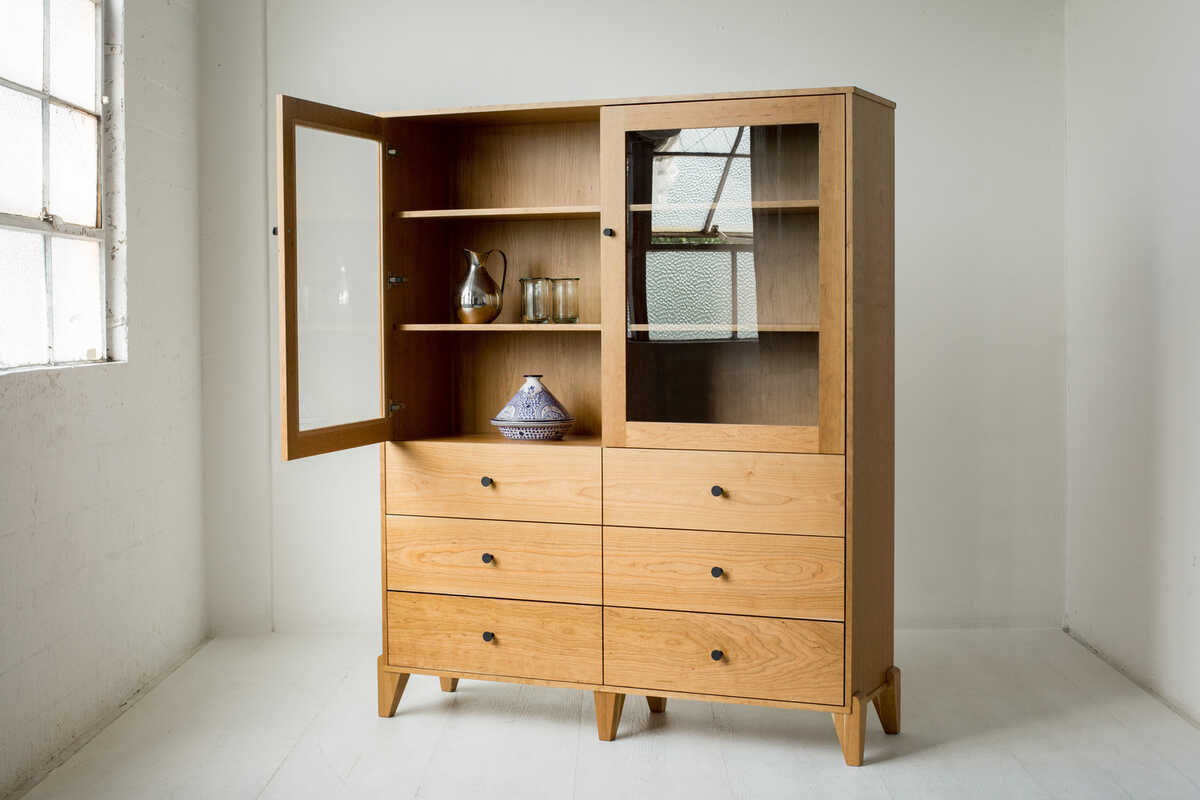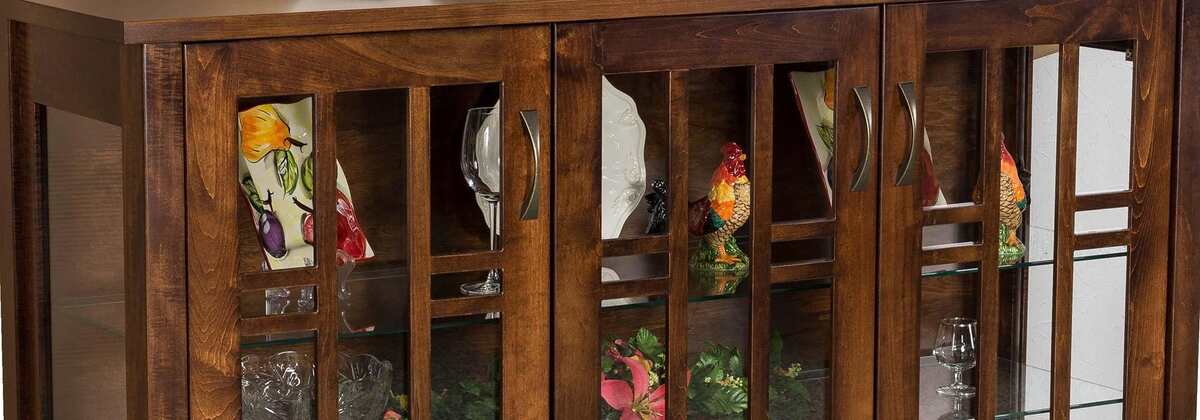Curio furniture, often called curio cabinets or display cases, is a special type of furniture made to show off collectibles, antiques, and other valuable items. These pieces do more than just hold your stuff—they add style to a room. Curio cabinets keep your treasured items safe from dust and damage while letting you display them in a beautiful way. They come in all sorts of styles, sizes, and materials, so they fit into any home.
In this guide, we’ll look at everything you need to know about curio furniture. We’ll cover its history, types, materials, design styles, and give you tips on picking one, showing off your items, and keeping it in good shape. Whether you’ve been collecting for years or just want to start showing off your favorite things, this guide has you covered.
The History of Curio Furniture
Curio furniture goes way back to the 16th century. Wealthy Europeans started collecting odd and interesting things from around the world, like fossils, artifacts, and exotic objects. They needed a place to show them off, so they built special cabinets called “cabinets of curiosities” or “wonder rooms.” These early curio cabinets were fancy, often made from rare woods, and showed off the owner’s wealth. For example, King Gustav III of Sweden had a famous one in the 18th century with wild items like a stuffed lion and a piece of the True Cross.
As time went on, curio cabinets changed. By the 18th and 19th centuries, they started using glass doors and shelves so people could see the items better. They also became more common—not just for the super-rich anymore. Now, curio furniture is a popular choice in homes everywhere, giving people a stylish way to display their personal collections.
Types of Curio Furniture
There are lots of types of curio furniture out there. Each one has its own perks. Here’s a rundown of the main ones:
-
Wall-Mounted Curio Cabinets: These are great for small spaces. You hang them on the wall at eye level, so they don’t take up floor space. They’re perfect for showing off smaller collections or a single special item. Howard Miller makes some nice ones with glass doors and shelves you can move.
-
Corner Curio Cabinets: These fit right into room corners. They’re shaped like a triangle and make smart use of space. They can also make a room look more interesting. IKEA’s DETOLF corner cabinet is a solid pick—simple, modern, and doesn’t cost a ton.
-
Freestanding Curio Cases: These are super flexible. You can put them anywhere in a room. They come in all sizes, from tall towers to short consoles. Pulaski Furniture has some freestanding ones with classic designs that stand out.
-
Hanging Curio Cabinets: These are like picture frames that hang on the wall. They’re awesome for flat stuff like plates or artwork. You’ll see them a lot in dining rooms or kitchens.
-
Built-In Curio Cabinets: Some are part of bigger furniture, like bookcases or hutches. They mix display space with storage, which is handy if you’ve got a big collection.
Picking the right type depends on your space and what you want to show off. Got a tiny apartment? Go for a wall-mounted one. Have a huge collection? A freestanding case with lots of shelves might be your best bet.
You may also like to read the 10 Minimalist Living Room Tips to Refresh Your Space.
Materials Used in Curio Furniture
Curio furniture comes in different materials, and each has its ups and downs. Here’s what you’ll find:
-
Wood: People love wood for its strength and timeless look. Solid wood cabinets last forever but can be heavy and pricey. Veneered wood looks similar but costs less. You’ll see woods like oak, mahogany, or pine a lot. Plus, wood can come from sustainable sources, which is good for the planet.
-
Glass: Glass cabinets feel modern and let you see everything inside clearly. They usually have metal frames to hold them up. The downside? Glass needs cleaning all the time and can break easier. On the bright side, it’s recyclable.
-
Metal: Metal cabinets are tough and give off a cool, industrial vibe. They’re common in newer designs. But they can scratch, and they don’t always match every room. Metal’s recyclable too, which is a bonus.
Lots of curio cabinets mix materials—like wood frames with glass doors and shelves. That way, you get wood’s sturdiness and glass’s clear view.
When you’re picking a material, think about your budget, your home’s style, and how much upkeep you’re okay with. If you hate cleaning, wood might beat out glass.

Design Styles and Features
Curio furniture comes in all kinds of looks, from old-school to brand-new. Here are some big styles:
-
Traditional: These have fancy carvings, dark wood, and old-fashioned hardware. They bring a classy, historical feel to a room. A Victorian-style cabinet might have curved lines and tons of detail.
-
Modern: These are clean and simple, with straight lines and not much fuss. They often use glass and metal for a light, airy look. An Art Deco one might have sharp shapes and bright colors.
-
Transitional: This style mixes old and new. It’s got simple lines but a few pretty touches, so it works with lots of decor. It’s a safe pick if you’re not sure what you like.
Some features make curio furniture even better. Lights inside—like LED ones—can show off your stuff and save energy. A mirrored back makes your collection look bigger. Shelves you can move around let you fit all kinds of items. You might also want locking doors if your stuff’s valuable or glass shelves for a lighter feel.
Match the style to your home. Traditional decor? Go with a wood cabinet. Modern space? Try glass and metal.
How to Choose the Right Curio Cabinet
Picking the perfect curio cabinet takes a few steps. Here’s how to do it:
-
Measure Your Space: Make sure it fits. Check height and width, and leave room around it so you can get to it.
-
Match Your Style: Look at your other furniture. A wood cabinet fits with lots of wood stuff. A glass one works in a modern home.
-
Think About Your Items: What are you displaying? Tall things need tall cabinets or movable shelves. Small stuff does better with lots of little spots.
-
Set a Budget: Prices vary a lot. Decide what you can spend before you shop.
-
Check Features: Lights, mirrors, and glass shelves make a difference. Pick what you like.
-
Look at Security: Got pricey items? Get a cabinet with a lock.
-
Read Reviews: Make sure it’s well-made and people like it.
Here’s a quick checklist:
-
Measure your space
-
Match your style
-
Think about your items
-
Set a budget
-
Check features
-
Look at security
-
Read reviews
Follow these steps, and you’ll find a curio cabinet that works for you.
Displaying Items in Curio Furniture
Showing off your stuff in a curio cabinet takes a little planning. Here’s how to make it look good:
-
Group Things Together: Put similar items—like all blue ones or all toys—in one spot. It looks neat.
-
Add Height: Use stands or risers so not everything’s flat. It keeps the eye moving.
-
Leave Space: Don’t cram it full. Give each item room to shine.
-
Use Lights: LED lights can make special pieces pop or give a cozy glow.
-
Pick a Background: A mirror makes it look bigger. A plain back keeps it simple.
Get creative with what you display. Try vintage cameras, old books, or family photos. You could show off seashells, toy cars, or holiday decorations. Switch things up now and then to keep it fresh.
Care and Maintenance of Curio Furniture
Taking care of your curio furniture keeps it looking nice for years. Here’s what to do:
-
Glass: Use a soft cloth and gentle cleaner. Wipe it often to stop dust and smudges.
-
Wood: Dust with a dry cloth. Skip harsh stuff—it can ruin the finish. Use wood polish if it’s dry.
-
Metal: Wipe with a damp cloth and dry it fast so it doesn’t rust. Touch up scratches with paint.
Keep it out of sunlight and away from heat so it doesn’t fade or warp. If your items are fragile, stick them down with museum putty.
These tips will keep your curio furniture in top shape.
Incorporating Curio Furniture into Home Decor
Adding curio furniture to your home can be fun. Here’s how to make it work:
-
Make It Stand Out: Put it somewhere big—like the living room or dining room. Pick one with a bold design or color.
-
Blend It In: Match it to your other stuff. A dark wood cabinet fits with dark wood furniture.
-
Place It Right: Try the entryway for a wow factor, the bedroom for personal treasures, or the office for awards.
For different looks:
-
Traditional: Fancy details fit classic homes.
-
Modern: Glass works in sleek spaces.
-
Rustic: Wood suits a cozy, country vibe.
Think about how it fits, and you’ll get a stylish setup.
Conclusion
Curio furniture is a great way to show off your collectibles, antiques, and special items. With so many types, materials, and styles, there’s something for every home. Pick the right cabinet, arrange your stuff with care, and keep it clean—you’ll have a stunning piece that adds to your room. Whether you’ve got a big collection or just a few favorites, curio furniture keeps them safe and looking good. Think about adding one to your home and enjoy what it brings to your space.
